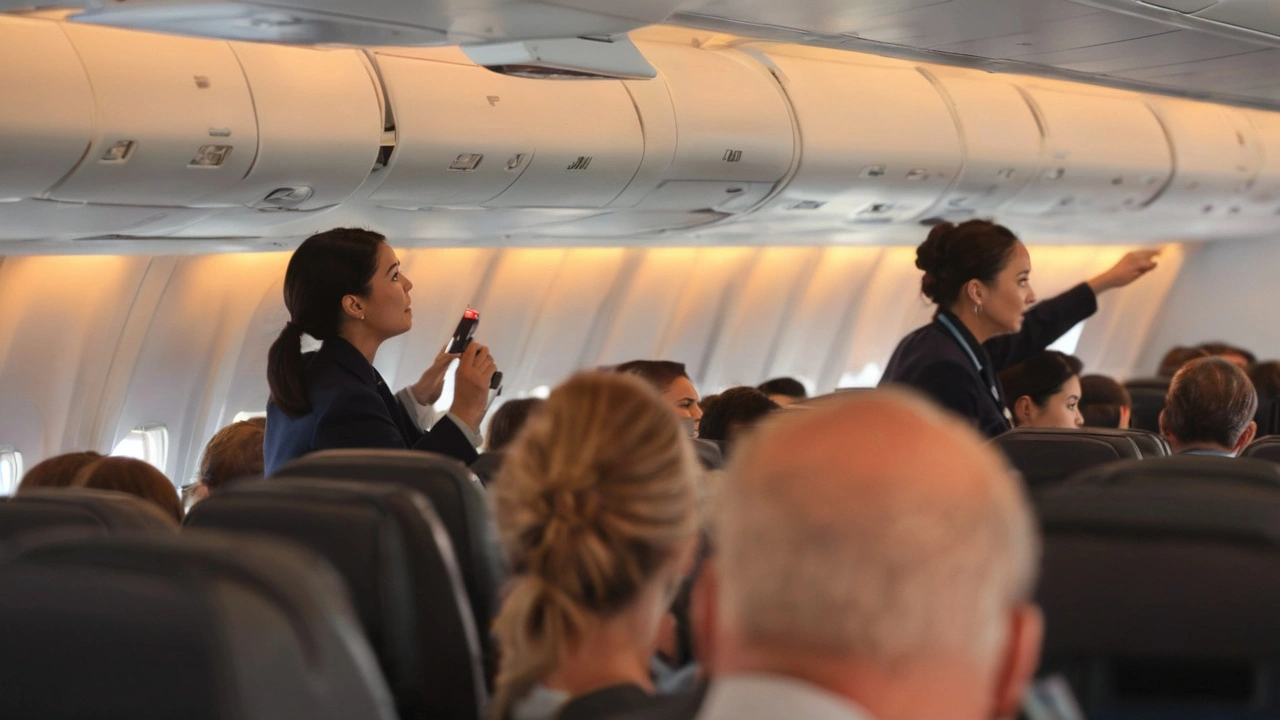What Does a Flight Attendant Actually Do?
If you’ve ever flown, you’ve probably seen the friendly faces walking down the aisle with coffee or safety cards. That’s a flight attendant – the person who makes sure everyone stays safe and comfortable while the plane is in the air.
Key Duties on Every Flight
The job isn’t just about serving snacks. First, attendants run safety checks before doors close: they verify that emergency equipment works, that exits are clear, and that the cabin is tidy. Once passengers board, they greet travelers, help with luggage, and answer any questions about the flight.
During take‑off and landing, they demonstrate how to use seat belts, oxygen masks, and life vests. If turbulence hits, they secure carts, calm nervous flyers, and keep aisles clear. In case of an emergency, they lead evacuations, guide people to exits, and assist anyone with special needs.
After the plane lands, attendants clean up, collect trash, and prepare for the next flight. They also complete paperwork about any incidents or passenger feedback.
How to Become a Flight Attendant
Most airlines require a high school diploma or GED; many prefer some college or a degree in hospitality, tourism, or communication. You’ll need to be at least 18‑21 years old (varies by carrier) and meet height and weight guidelines so you can reach overhead bins.
The hiring process usually includes an application, a phone interview, and then an in‑person group assessment where they test your teamwork, problem‑solving and customer service skills. If you pass, the airline sends you to a training program – typically 4‑6 weeks long – that covers safety procedures, first aid, fire fighting, and cabin service.
After training, you’ll get a certificate from the aviation authority (like the FAA in the US or EASA in Europe). From there, you’re officially a flight attendant and can start logging flight hours.
Salary, Benefits & Job Outlook
Pay varies by airline, region and experience. In many countries, entry‑level attendants earn around $30,000 – $40,000 per year, while senior crew members can make $70,000 or more, especially on long‑haul routes.
Benefits often include health insurance, travel perks for you and sometimes family, retirement plans, and discounted airline tickets. Because the industry is growing in emerging markets, demand for cabin crew is steady – airlines need staff to cover new routes and replace retirees.
Tips for Passengers: How to Make Their Job Easier
Be polite and listen when they give safety instructions; it helps them focus on other safety tasks. Keep your seatbelt fastened whenever the sign is on, even if you’re just moving around.
If you need assistance, ask calmly – a clear request saves time for everyone. When storing bags, follow their guidelines so overhead bins don’t get overloaded. Finally, remember they’re juggling many responsibilities; a simple “thank you” goes a long way.
Whether you’re thinking about a career up in the clouds or just want to be a better passenger, knowing what flight attendants do makes every flight smoother for everyone on board.

Air Canada Flight Incident: Crew Member Loses Temper Over Blanket Request, Leading to Flight Cancellation
Jul 31, 2024, Posted by Ra'eesa Moosa
An Air Canada flight was canceled after a heated altercation between a flight attendant and a passenger who requested a blanket. The incident escalated with the crew member threatening to remove passengers and calling the police. Air Canada has apologized and promised compensation for the inconvenience.
MORE